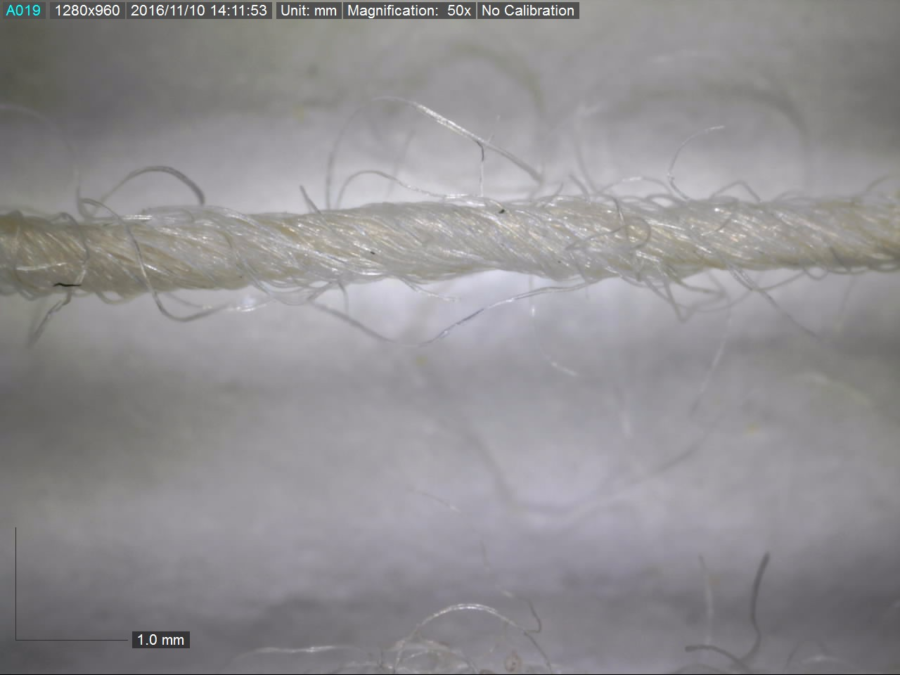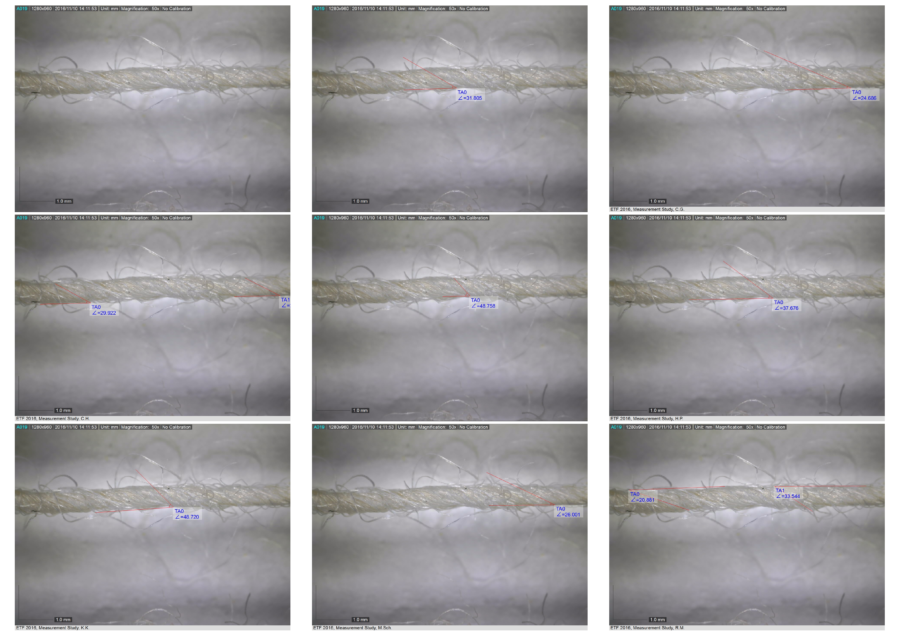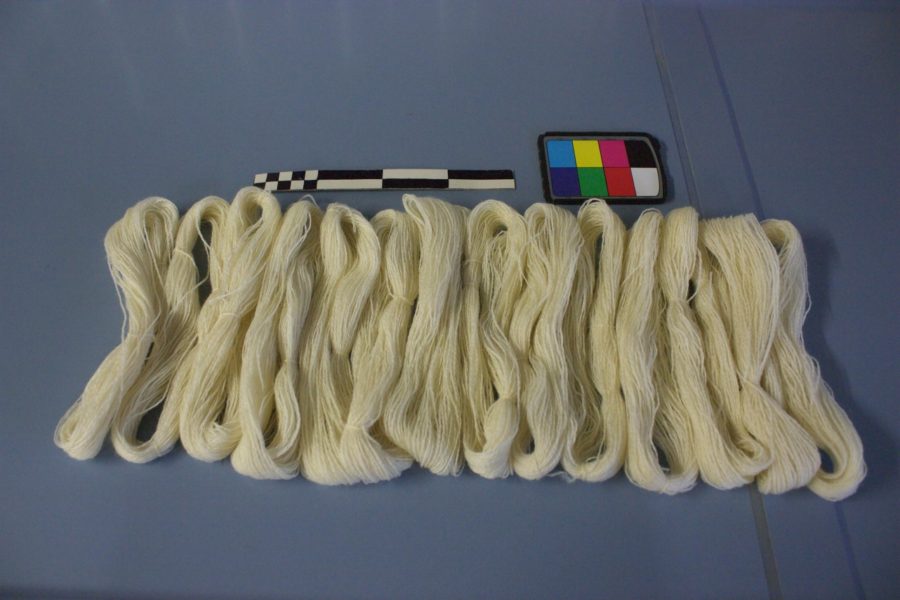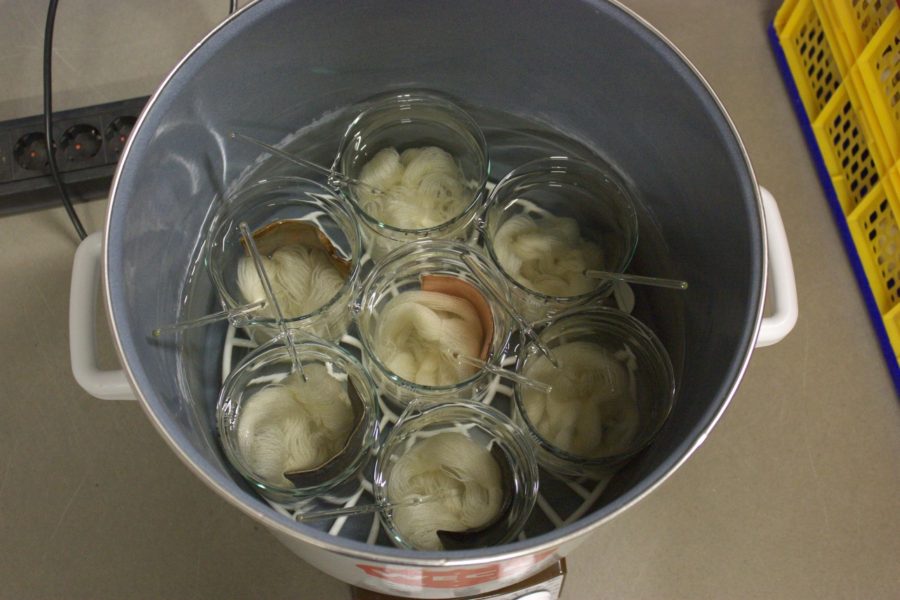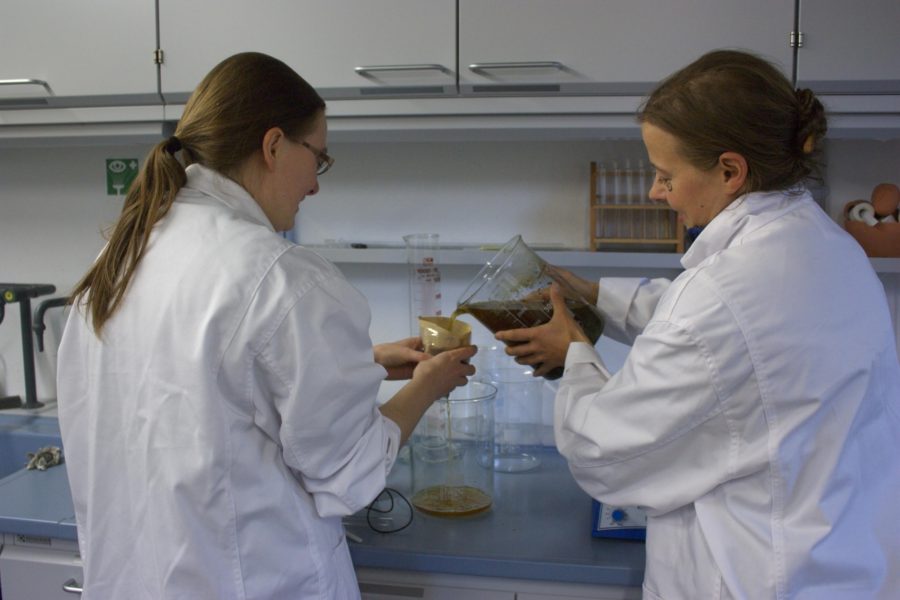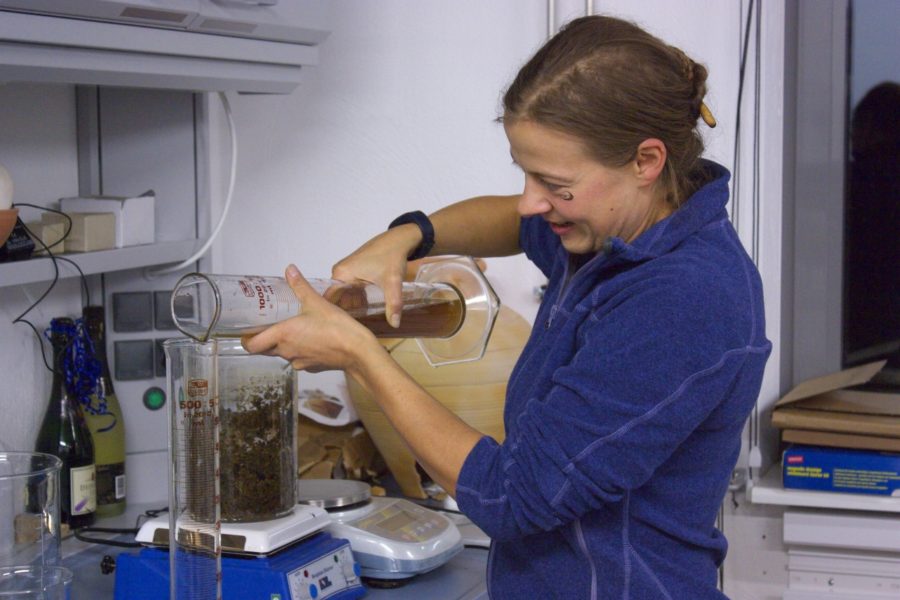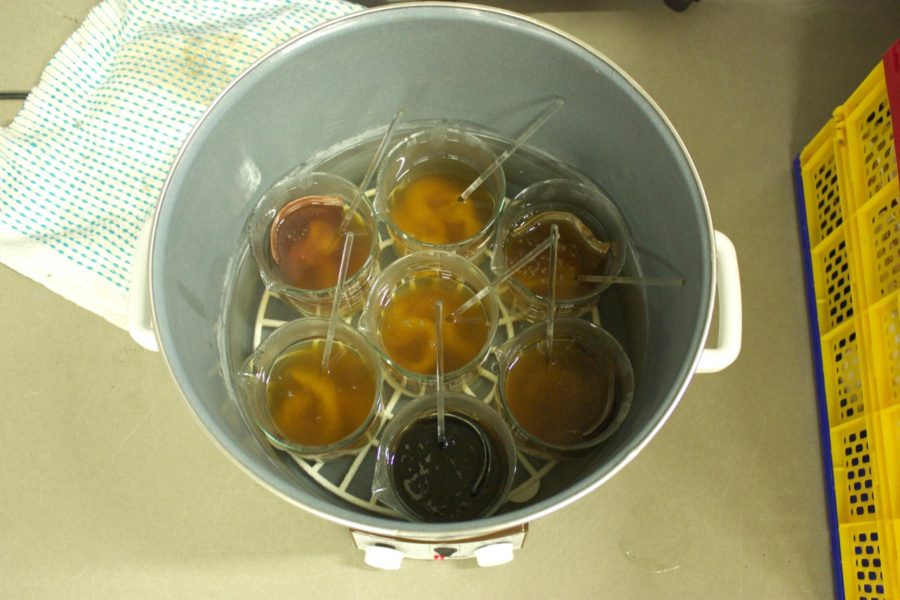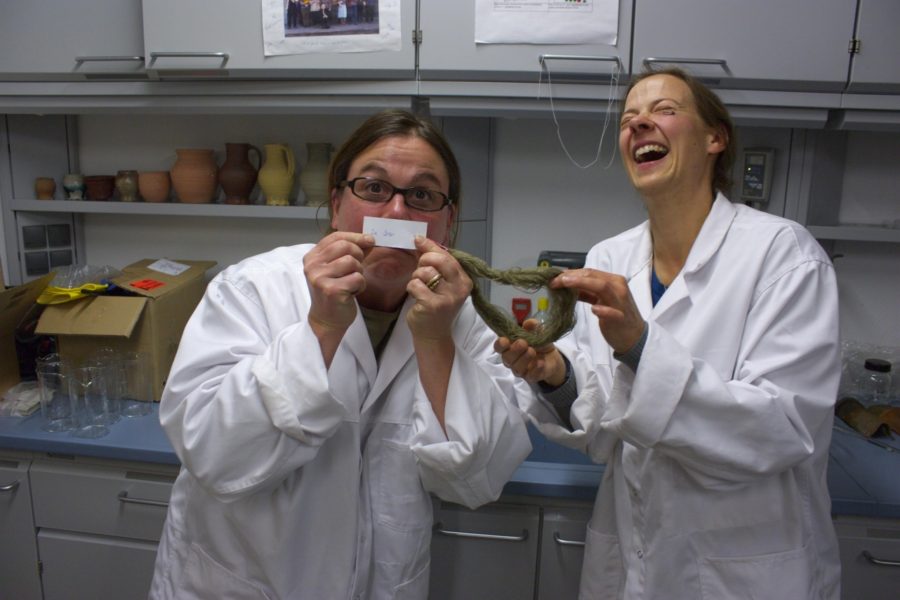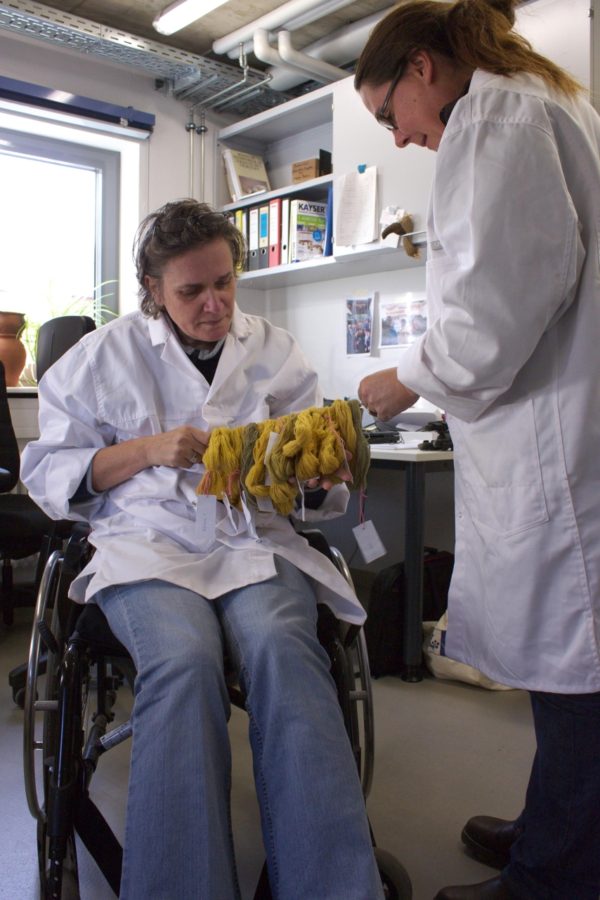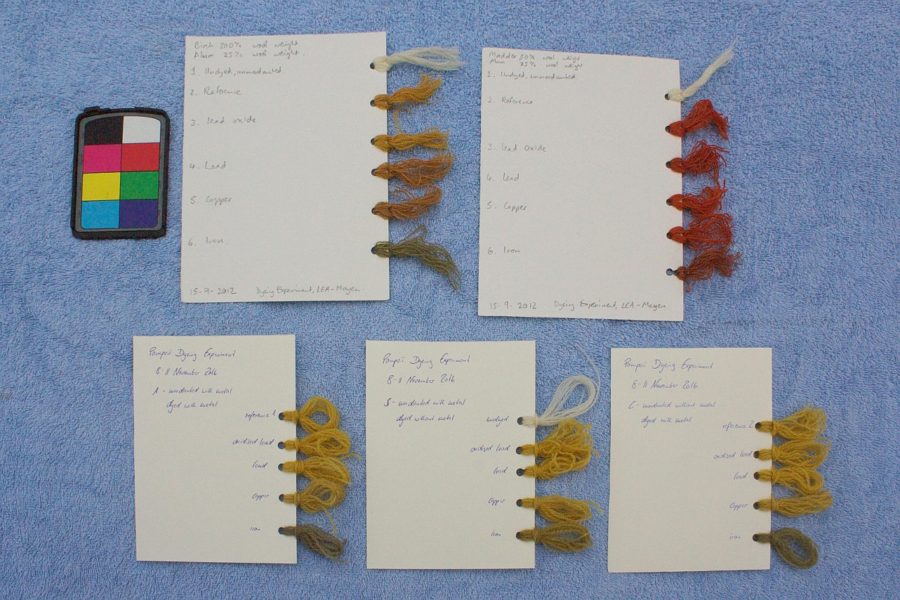I am back home from the Forum, and it was wonderful - a whirlwind week, as it usually is. Every time, I am surprised at how quickly time flies past when we are in Mayen, and every time I'm delighted with how much is happening. Little detail problems are suddenly thrown into the spotlight, and then people throw themselves at the problems and try to figure out how something was made, or why something might look as it does.
This year, we had an array of really interesting discussions and tests. The effects of the de-gumming on silk when dyeing was one of them, and first results were really interesting - the de-gummed silk takes on less colour than the gummy silk. A number of little test skeins were dyed, and they have gone home with Ruth, who will do light-fastness, wash-fastness and rub-fastness tests with them in order to see how well the dye sticks to the various samples.
[caption id="attachment_3461" align="alignnone" width="304"]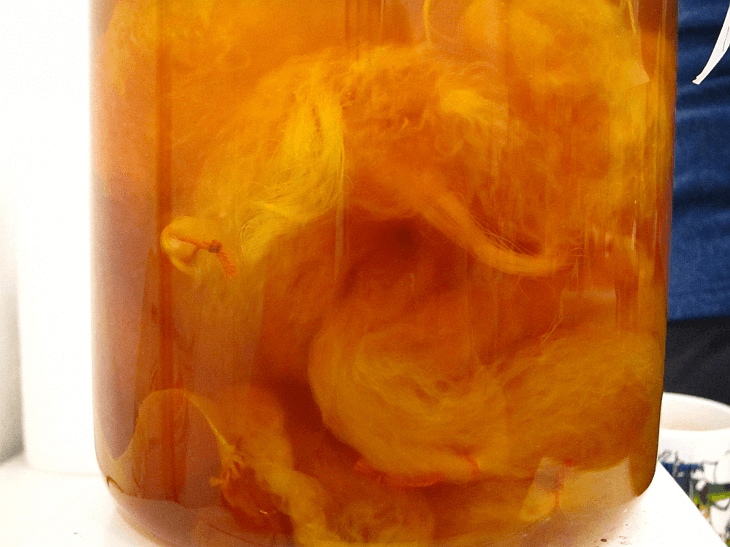 Silk being dyed...
Silk being dyed...
[caption id="attachment_3460" align="alignnone" width="465"]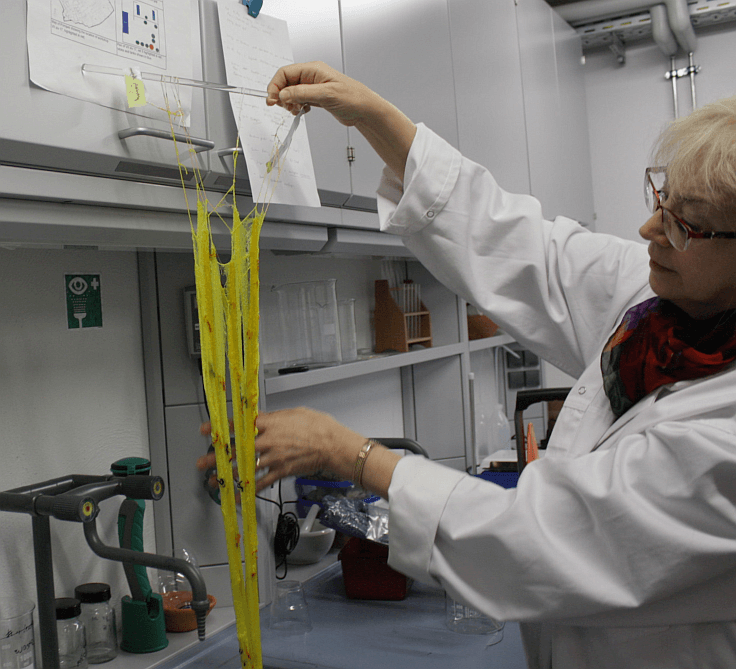 ...and the skeins after rinsing.
...and the skeins after rinsing.
We also had some reeling of silk, some tablet-weaving and, to my great delight, some hacking of slits into pieces of silk to explore the pinking and slashing techniques. That was not only extremely interesting, but also a lot of fun - and the slashing does explain why some fabrics might have been woven in just the way they were done.
There were also really good discussions about swastika motifs in tablet weaving and the problems this motif can lead to today (especially if you are based in Germany), and discussions about the terminology of wild vs. domesticated silk.
And of course there was lots of coffee. There was chocolate. There was the traditional stroopwafel spinning...
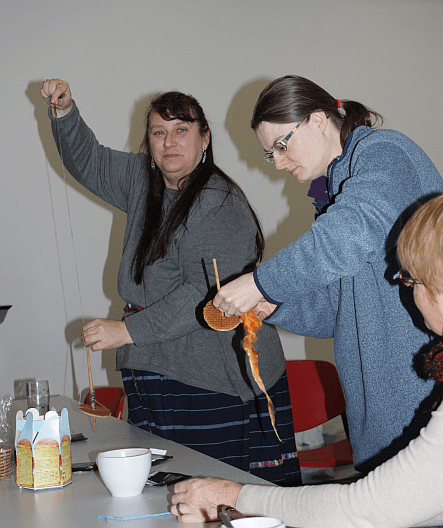
it was a wonderful week!
This year, we had an array of really interesting discussions and tests. The effects of the de-gumming on silk when dyeing was one of them, and first results were really interesting - the de-gummed silk takes on less colour than the gummy silk. A number of little test skeins were dyed, and they have gone home with Ruth, who will do light-fastness, wash-fastness and rub-fastness tests with them in order to see how well the dye sticks to the various samples.
[caption id="attachment_3461" align="alignnone" width="304"]
 Silk being dyed...
Silk being dyed...[caption id="attachment_3460" align="alignnone" width="465"]
 ...and the skeins after rinsing.
...and the skeins after rinsing.We also had some reeling of silk, some tablet-weaving and, to my great delight, some hacking of slits into pieces of silk to explore the pinking and slashing techniques. That was not only extremely interesting, but also a lot of fun - and the slashing does explain why some fabrics might have been woven in just the way they were done.
There were also really good discussions about swastika motifs in tablet weaving and the problems this motif can lead to today (especially if you are based in Germany), and discussions about the terminology of wild vs. domesticated silk.
And of course there was lots of coffee. There was chocolate. There was the traditional stroopwafel spinning...

it was a wonderful week!




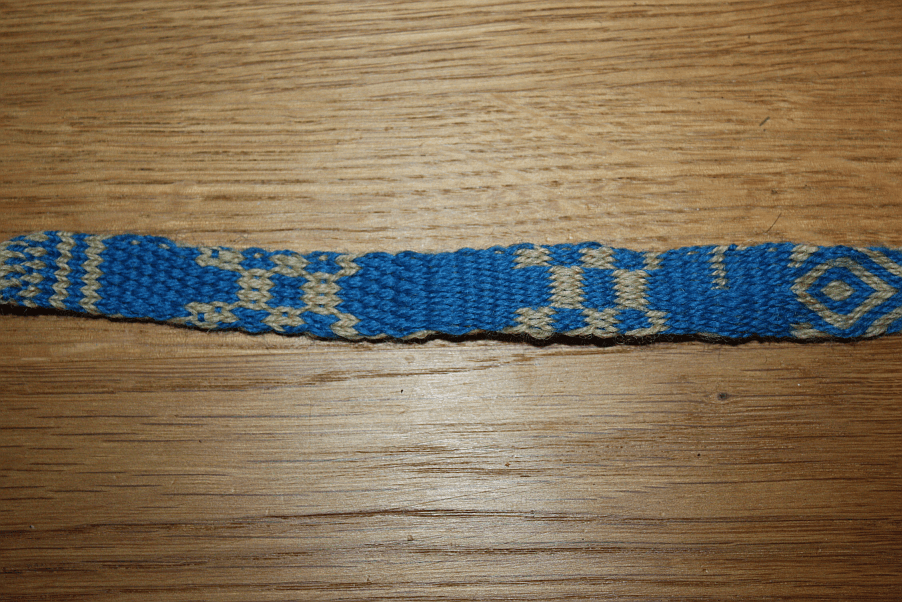 Starting off easy - a few straight lines, a bit of doubleface, getting an understanding of how things work.
Starting off easy - a few straight lines, a bit of doubleface, getting an understanding of how things work.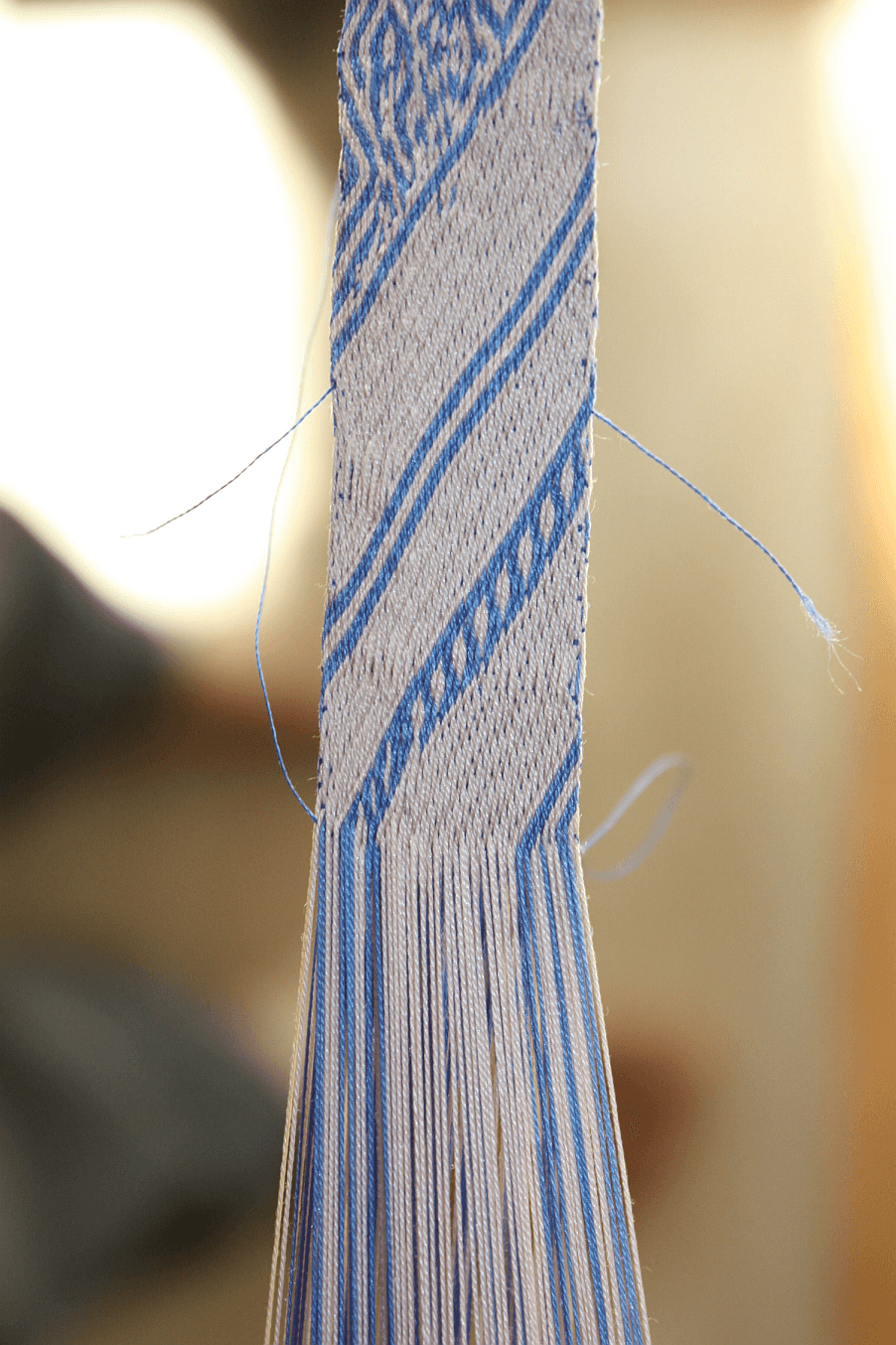 Speaking of the brain-bender, here's the current status. As you can see, I have done my best to try out how to deal with mistakes. Those, by the way, are mostly due to my weaving in the evening at the moment, when I'm already a bit tired... as a robust system should be up to a tired weaver, right?
Speaking of the brain-bender, here's the current status. As you can see, I have done my best to try out how to deal with mistakes. Those, by the way, are mostly due to my weaving in the evening at the moment, when I'm already a bit tired... as a robust system should be up to a tired weaver, right?